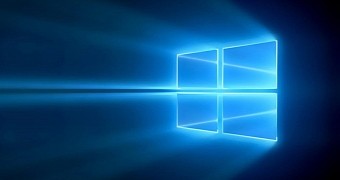Microsoft is all about Windows 11 these days, and while the company keeps supporting Windows 10 as well, it’s not really a surprise that the focus has already been moved entirely to the latest operating system version.
However, Windows 10 is approaching one important milestone: Microsoft will stop selling product keys for the operating system, meaning that whoever wants to buy this particular version of Windows will no longer be able to do so.
This sounds dramatic for those who planned to get Windows 10 in the coming weeks or months, but the change isn’t necessarily the end of the world.
And here’s precisely why.
First and foremost, Microsoft explains in the warning posted on its website that the product keys would no longer be available from its own store.
“January 31, 2023 will be the last day this Windows 10 download is offered for sale. Windows 10 will remain supported with security updates that help protect your PC from viruses, spyware, and other malware until October 14, 2025,” the company says.
In other words, product keys for Windows 10 will continue to be available from other stores, including the many retailers that are located in the majority of countries across the world. So while you’ll no longer be able to buy a Windows 10 license from Microsoft, product keys will continue to be sold by other stores.
This is because Microsoft isn’t blocking the activation of Windows 10 altogether but only stopping selling the product keys that you need for the process.
Then, even if Windows 10 product keys are going away, that doesn’t mean you’d no longer be able to install and use the operating system.
It’s not a secret that Windows 10 can also be activated with Windows 7 and Windows 8.1 product keys, as this served as one of the most efficient ways that Microsoft turned to in order to boost the adoption of its operating system. Windows 7 and 8.1 users were provided with a free upgrade option in the 12 months of Windows 10 availability, and while Microsoft claims the promo has already ended, this is not the case.
Users who install Windows 10 on a new device can still activate the operating system with valid Windows 7 and Windows 8.1 keys. And this won’t change after the software giant stops selling Windows 10 product keys either, meaning that you can very well use the old license for a Windows 7 or 8.1 system on a Windows 10 device too.
I’ve seen reports that activating Windows 10 with a Windows 11 product key works as well. And this provides you with another option if Windows 11 isn’t necessarily your cup of tea. In other words, if you purchase a new computer that comes pre-loaded with Windows 11 but don’t want this operating system, you should theoretically be able to downgrade to Windows 10 and then activate the installation with the original Windows 11 key.
If the downgrade option isn’t available when you set up the device, applications like ProduKey should help you extract the product key and then start from scratch with Windows 10. You should eventually be able to activate Windows 10 using the product key extracted from the Windows 11 device.
At the end of the day, it’s worth knowing that Windows 10 will continue to get updates until October 2025. This means devices running this OS version will still be supported for two more years, after which the focus will be exclusively on Windows 11.

 14 DAY TRIAL //
14 DAY TRIAL //